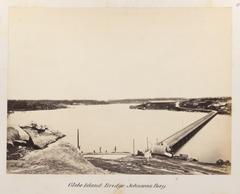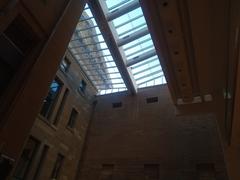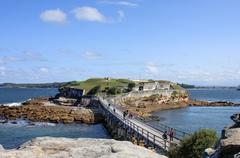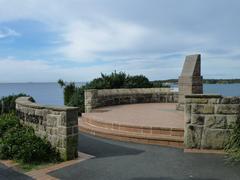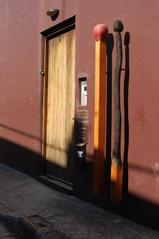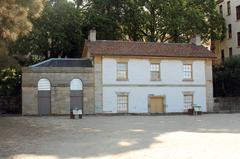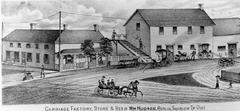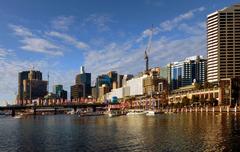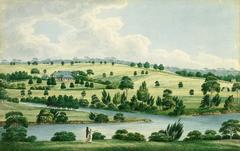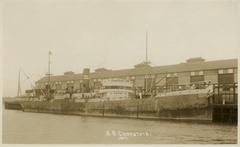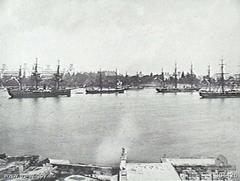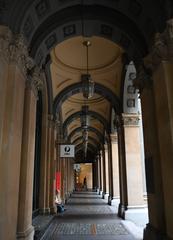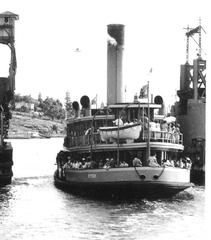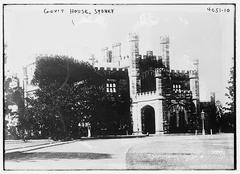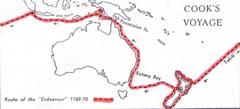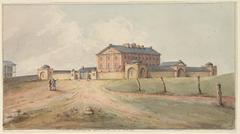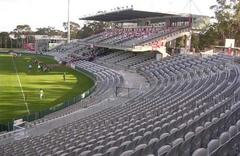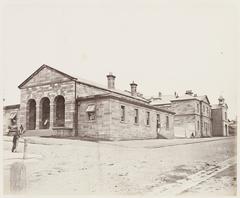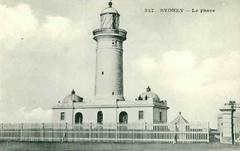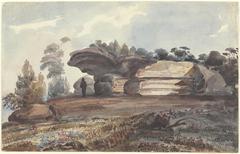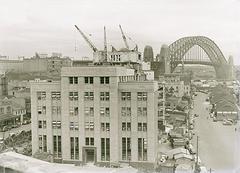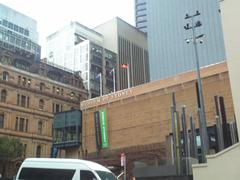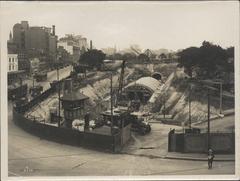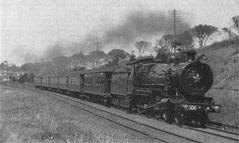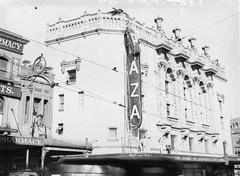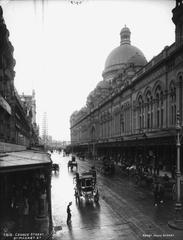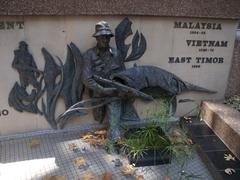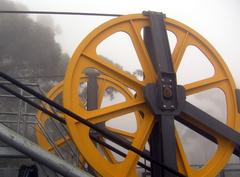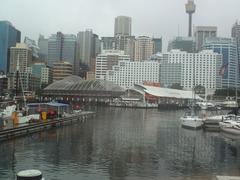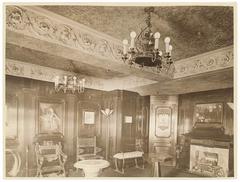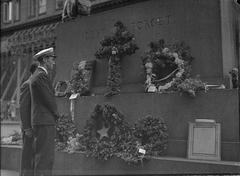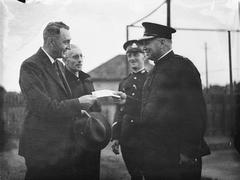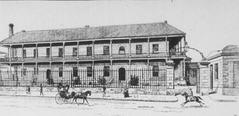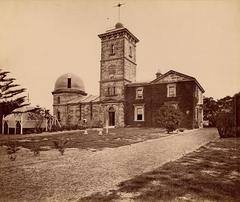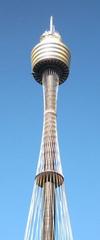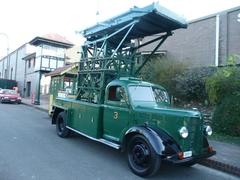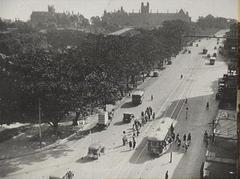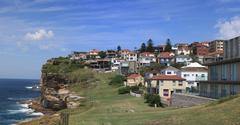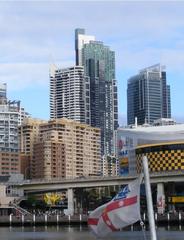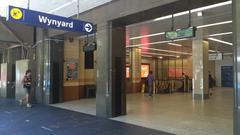
Lennox Bridge Visiting Hours, Tickets, and Guide to Glenbrook Historical Site, Sydney
Date: 03/07/2025
Introduction
Lennox Bridge in Glenbrook, Sydney, is a captivating symbol of Australia’s colonial engineering and early infrastructure. Standing as the oldest surviving stone arch bridge on the Australian mainland, it provides visitors with an immersive historical experience amid the scenic Blue Mountains. Designed by master stonemason David Lennox and constructed in 1833 using convict labor, the bridge exemplifies pioneering 19th-century architecture. Today, Lennox Bridge is not only a renowned heritage landmark but also a gateway to natural beauty, bushwalking, and local culture. This comprehensive guide covers everything you need to know for your visit, including history, opening hours, access, nearby attractions, and practical tips.
For official information, see the New South Wales State Heritage Register and Blue Mountains Visitor Centre.
Table of Contents
- Historical Background
- Visiting Lennox Bridge: Practical Details
- Tours, Events, and Community Engagement
- Nearby Attractions & Activities
- Heritage Significance
- Visitor FAQs
- Plan Your Visit
- Visual Media
- Conclusion and Travel Resources
Historical Background
Origins and Construction
Commissioned in 1832 and completed in 1833, Lennox Bridge was designed by Scottish stonemason David Lennox, who brought expertise from working under Thomas Telford in Britain. Under the supervision of Surveyor General Major Thomas Mitchell, Lennox led a team of about 20 convicts who quarried local sandstone and constructed the distinctive horseshoe-arched bridge. This engineering feat provided a vital transport link to Sydney’s expanding western settlements (Kiddle; NSW Heritage).
Architectural Features
Lennox Bridge is celebrated for its single-span, horseshoe-shaped stone arch, measuring 6 meters across and rising 9 meters above Brookside Creek. The arch design, innovative for its time, ensured structural strength and allowed safe passage for horse-drawn vehicles. Original inscriptions “DAVID LENNOX” and “AD 1833” are still visible on the keystones, underscoring its historical authenticity.
Role in Colonial Transportation
For nearly a century, Lennox Bridge served as the primary western route from Sydney, supporting economic development and settlement in New South Wales. The bridge replaced earlier, less reliable crossings, improving safety and efficiency for travelers and trade.
Restoration and Preservation
With the growth of rail and alternative roads, traffic on Lennox Bridge declined. Major restorations in the 1970s and 1980s reinforced the structure and added a concrete road deck to preserve the original stonework. Today, the bridge is protected by heritage listing and maintained by Blue Mountains City Council (NSW Heritage).
Visiting Lennox Bridge: Practical Details
Visiting Hours
- Open: Year-round, daily from dawn until dusk.
- Entry: Free of charge; no tickets required.
Accessibility
- The bridge and its surroundings are moderately accessible.
- A concrete path leads to the creek for viewing the arch, but the terrain can be steep and uneven.
- Wheelchair access is limited; visitors with mobility needs should contact the Blue Mountains Visitor Centre for up-to-date advice.
Getting There
By Public Transport
- Train: Take the T1 Western Line from Sydney Central to Glenbrook Station (approx. 1 hour).
- Walk: From Glenbrook Station, a 25-minute walk (1.5 km) via Park Street and the Great Western Highway leads to Mitchell’s Pass and the bridge at 88 Mitchells Pass, Glenbrook (Evendo).
- Opal Card fares apply (Opal Card).
By Car
- Drive via the M4 Motorway/Great Western Highway (A32) westbound from Sydney.
- Take the exit onto Mitchells Pass near Glenbrook; parking is available but limited near the bridge.
- Early arrivals are recommended, especially on weekends (Evendo).
Facilities & Safety
- No public restrooms or food vendors at the bridge; nearest facilities are in Glenbrook village (~2 km away).
- The area is generally safe, but care should be taken near water, on uneven surfaces, and during/after rain.
- Dogs are allowed on a leash. Littering and climbing on the stonework are prohibited to preserve the site.
Tours, Events, and Community Engagement
- Guided Walks: The Glenbrook & District Historical Society offers guided tours detailing the history, construction, and significance of the bridge.
- Community Events: The bridge is a hub for local history walks, educational programs, and events such as heritage festivals and commemorative gatherings.
- Educational Value: Lennox Bridge is frequently visited by school groups and included in local curriculum as an example of colonial engineering.
Nearby Attractions & Activities
- Blue Mountains National Park: Explore bushwalking trails, scenic lookouts, and native wildlife.
- Glenbrook Lagoon: A tranquil spot for birdwatching and picnics.
- Mitchell’s Pass Walking Track: Connects the bridge with other heritage sites and offers stunning views.
- Lapstone Zig Zag & Pointsmans Cottage: Nearby historical engineering sites (Glenbrook Blue Mountains).
Heritage Significance
Lennox Bridge is a National and State Heritage-listed site, celebrated for its pioneering construction, association with master stonemason David Lennox, and its role in the settlement and development of New South Wales. Its preservation connects visitors with the social and engineering history of early colonial Australia (Visit NSW).
Visitor FAQs
Q: What are Lennox Bridge’s visiting hours?
A: Open daily from dawn until dusk, year-round.
Q: Is there an entry fee or ticket required?
A: No, entry is free and no tickets are required.
Q: Is Lennox Bridge wheelchair accessible?
A: Accessibility is limited due to natural terrain. Contact the visitor centre for details.
Q: Are guided tours available?
A: Yes, through the Glenbrook & District Historical Society. Check their schedule in advance.
Q: How do I reach Lennox Bridge by public transport?
A: Take a train to Glenbrook Station, then walk ~25 minutes to the bridge.
Q: Are there restrooms or food vendors at the site?
A: No; facilities are in Glenbrook village.
Q: Where can I park?
A: Limited parking is available near the bridge; arrive early on weekends.
Plan Your Visit
- Best Time: Spring and autumn for mild weather and vibrant scenery.
- What to Bring: Water, sun protection, sturdy shoes, and a camera.
- Local Etiquette: Respect heritage structures, wildlife, and other visitors.
For updates and trip planning, consult the Blue Mountains Visitor Centre and Glenbrook & District Historical Society.
Visual Media

Lennox Bridge with its distinctive horseshoe arch, set amid the Blue Mountains landscape.
- Photo Alt Tag: Lennox Bridge Blue Mountains historical stone arch bridge
- For interactive maps and virtual tours, visit official tourism and historical society sites.
Conclusion
Lennox Bridge is a must-see for history enthusiasts, engineering admirers, and anyone seeking the beauty and stories of the Blue Mountains. Its enduring legacy as the oldest stone arch bridge on the mainland and its picturesque setting make it a highlight of any trip to Sydney’s historical sites. Plan your visit, respect this treasured landmark, and immerse yourself in Australia’s living heritage.
For more travel tips and curated guides, download the Audiala app and follow local heritage organizations online. Discover the unique blend of history and nature at Lennox Bridge—an enduring jewel of the Blue Mountains.
References
- NSW Heritage
- Blue Mountains Visitor Centre
- Visit NSW
- Evendo Lennox Bridge
- Glenbrook Blue Mountains
- BM Rail Trail


